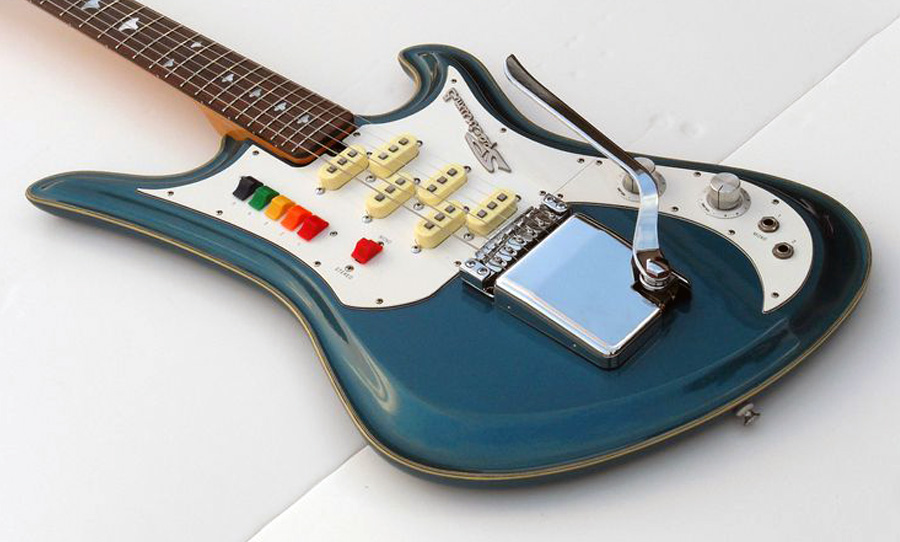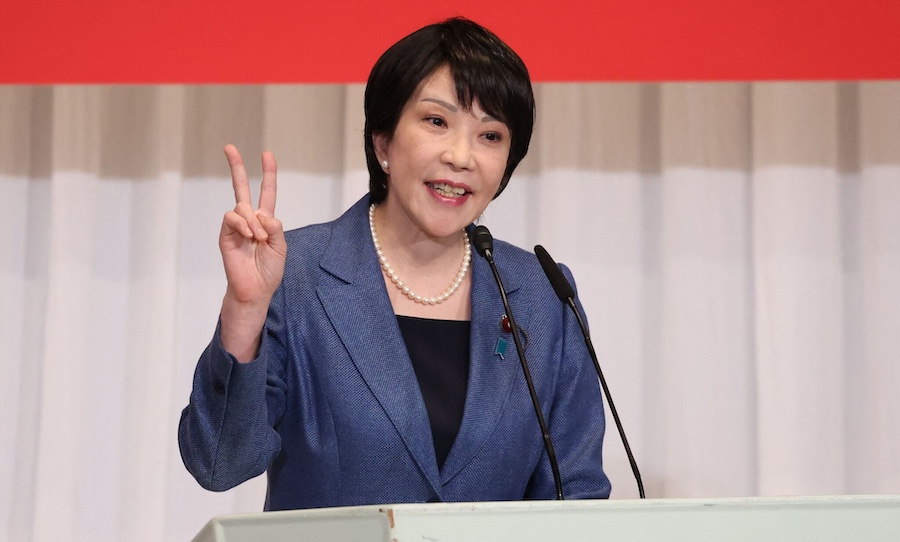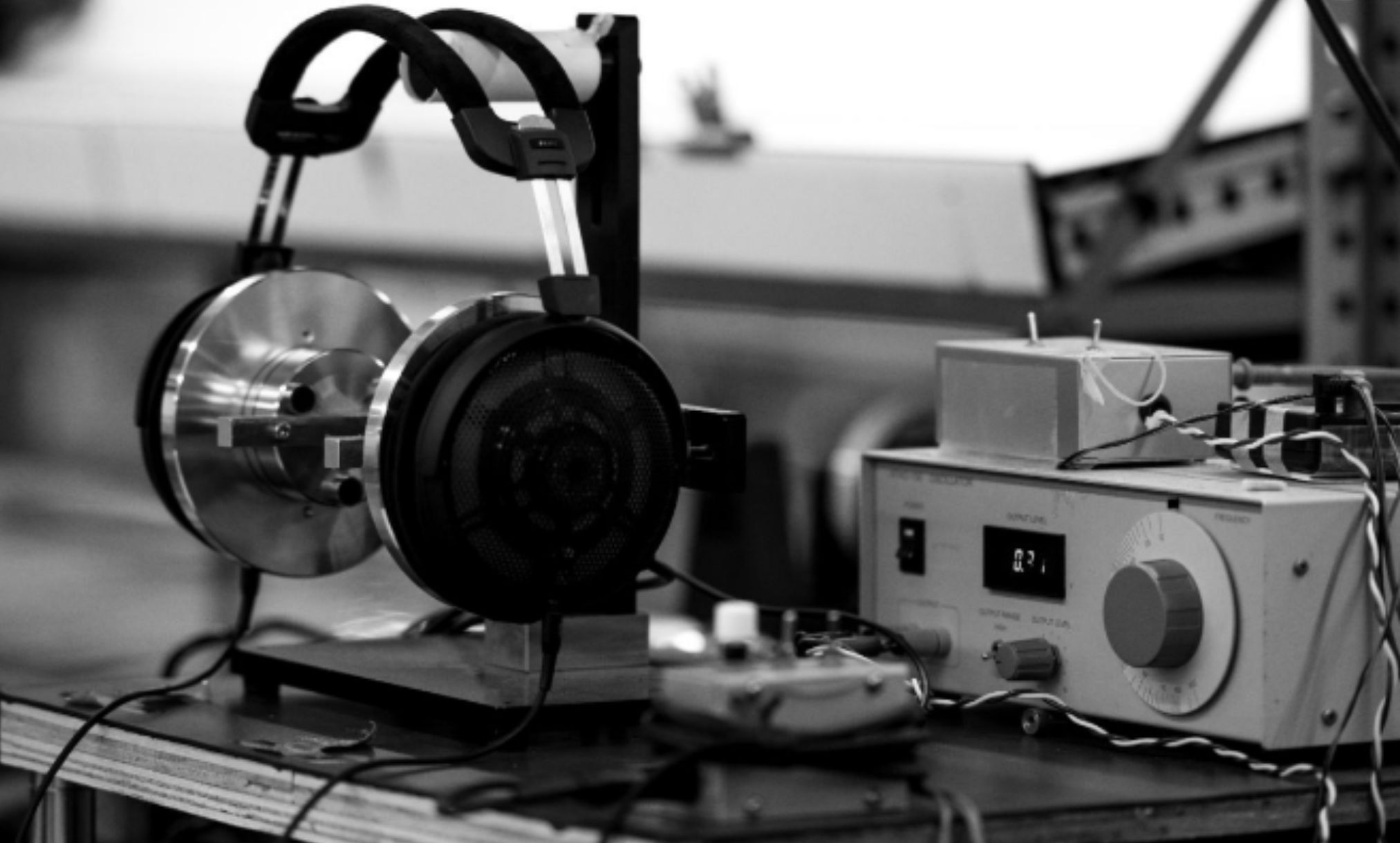Vintage Japanese-made guitars exude some of the most unique designs to have ever emerged on the market, often blurring the fine line between beauty and monstrosity.
In the beginning, Japanese electric guitar designers would meld their own inherent artistic flare with inspirations drawn from the few examples of American or British-made guitars they’d been exposed to, demonstrating a genuinely original approach to a craft that was largely unexplored in Japan.
An early example of this approach is the Guyatone LG-50 that appropriates some of the US-made Valco manufactured guitars, with the exception of the elongated Fender-esque headstock.
Due to the rising popularity of guitar music in the ’60s, many American and UK guitar wholesalers and importers saw this as an opportunity to start sourcing their products from across the Pacific in pursuit of a more affordable option that could then be sold in department stores and marketed to young aspiring musicians.

In the ’60s, Japanese manufacturers birthed some of the most bizarre guitars that we are ever likely to see. Here’s to weird designs, lavish pickups, complex switching systems and stereo outputs.
Major Japanese manufacturers like Teisco, Guyatone, Fujigen and Kwaki were approached by these wholesalers and importers with the request to replicate existing popular designs, with the freedom to aggrandise them to appeal to a teenage market.
With this push of encouragement, Japanese manufacturers were left to their own devices and took electric guitar luthiering into previously uncharted territories.
An abundance of tone controls, switches, and pickups became a trademark in these designs, embedded into a plethora of odd shapes that only partially reflected anything that was being sold in the American or UK markets.
A vast variety of brand names were labelled on these guitars once they left the shores of Japan, as importers would often pick and choose whatever designs they liked and stamp their own brand names on the headstock. Teisco, Teisco Del Ray, Silvertone, Guyatone, Norma, Kent, Greco, Imperial and Conrad are just a few names you might be familiar with today, however, there are literally hundreds more.
As a result, it’s been a topic of much debate over the years within the guitar hunter/collector community as to which manufacturers are to be held accountable for which designs that made it into the US and UK during that period, however, there are a number of nuances true advocates will find easily identifiable in the construction of these axes.
Most commonly, guitars that stayed in Japan would be branded with their respected manufacturer’s name, making these electric warriors cornerstones for solving the mystery of their immigrant cousins.
Here, we want to recognise some of our favourite designs you may or may not yet be familiar with and, that we believe are in need of re-issuing, or just general appreciation for their sheer originality.
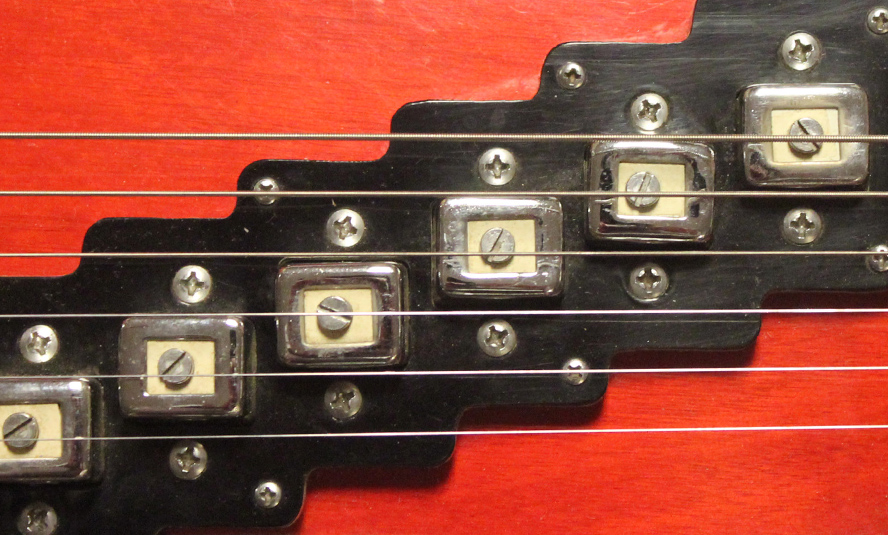
Teisco Del Ray Spectrum 5 (1966)
The Teisco Del Ray Spectrum 5 hit the shelves circa 1966 along with the rest of the Spectrum range. All share similar stylings, however, the 5 is really the crème de la crème of the series.
The name alludes to the guitar’s ability to produce five different tonal ‘colours’, or, as Teisco prefer you to think of it, A Spectrum Of Sound.
The staggered pickups with stereo/mono output could be used alone, or in any combination for stereo output. With the added bonus of having two jacks installed, this Spectrum could be split: bass through one channel and treble through the other.
Throughout the Spectrum series, Teisco were exploring different interpretations of a mahogany Mosrite-style guitar with its carved edge along with Kay-like fretboard inlays, accompanied by their signature ‘four and two’ tuner arrangement at the headstock.
The integral bridge that housed the vibrato arm also moved with the assembly in order to eliminate friction on the strings. These were common threads throughout the Spectrum series, however, the five-ply ebony neck and the addition of the plastic faceplate on the headstock were exclusive to the 5.
Today, you can pick one of these original bad boys up on eBay for around $1500 (AUD) from Japan, or alternatively, Eastwood guitars have done us all the favour of re-issuing them for around the same price they’ve stayed true to the original design, minus the four and two tuner headstock due to copyright laws.
Greco 975 Shrike 12-String (1968)
A number of variations of the Shrike series all use the same unique ‘V-shaped’ pickup configuration that not only looks groovy but harbours an impressive feature that would prove a useful tool in any guitar-slinger’s sonic palate.
Each enclosure houses 2 pickups, the top wing taking care of the low strings while the lower wing takes care of the high strings. Each pickup can be controlled individually via the pickup selector: to use all four simultaneously, or only the ‘top’ from the bridge pickup, or only the ‘bottom’ of the neck pickup, or vice versa. Tone city, here we come.
Aesthetically, the 975 does a wonderful job of fusing a Rickenbacker crisscross-style tuner layout with the Mosrite-inspired ‘zero-fret’ carved edge design. The pronounced cutaways in the body could be interpreted as a homage to the Burns/Baldwin guitars that were being produced in the US around the same time.
Today these axes are seldom seen on the market, however, some variations – the 6 string 975 and the GR-960, which are both very similar designs, have been spotted on Reverb.com and eBay, but it appears no one has yet braved a re-issue;
(Eastwood, we’re looking at you).
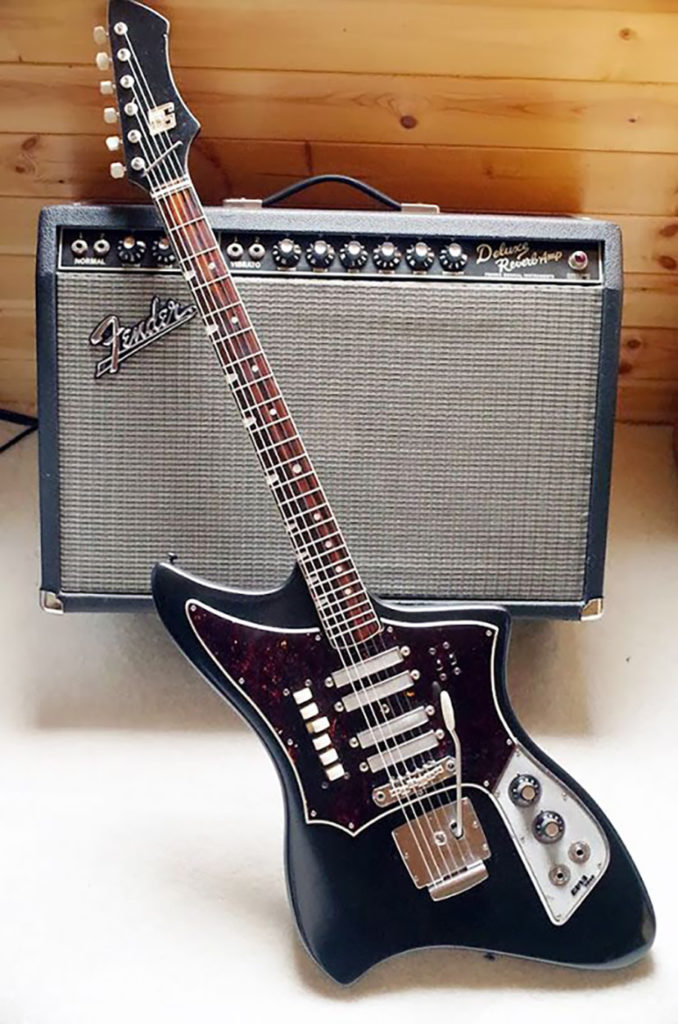
Guyatone LG-200T (1965)
While the LG-200T never made the shortlist of imports into the US and stayed humbly at home in Japan, it garnered a degree of popularity thanks to guitar wizard Ry Cooder’s endorsement, seen on the rear CD cover of his Grammy-winning produced album Mambo Sinuendo (2003).
These beasts (and we mean that; they apparently weigh a fucking ton) now stand as probably the rarest, and most highly sought-after collectable of our picks today. It appears dual outputs were all the rage in the mid to late ’60s as the LG-200T also rocks a stereo output configuration, with the two-volume controls wired up to govern both left and right volumes individually, and an additional TRS input was installed in the back of the body, which we assume was for external effect switching.
We get four single-coil pickups and six pickup switches that can each can be turned off and on individually for a veritable palette of tones at your fingertips, similar to the Spectrum 5 and Shrike.
Obviously, the Japanese understood that ‘tone’ meant everything to a guitarist, especially at a time before football-pitch sized pedalboards became a vital component in many guitarist’s arsenals.
The shape of the body could be attributed to either a ’63 Eko 700/4V or the Guild Thunderbird S-200, as they all take on the shape of a more squared-off variation of an offset style design with an integrated Jag/Jazzmaster-esque floating tremolo. Lastly, the 24-fret neck gave the player that extra extension above the standard 22-fret guitars that were more commonly available.
Again our mates at Eastwood took it upon themselves to do a small run of reissues a few years back, but if you’re in search of an original you’re probably looking to pay around $2000 (AUD) as they are highly sought-after and again, seldom seen on the market. So if one magically appears at your feet, dig into those pockets!
If you really want to dive deep into the rabbit hole of specifically 1960s Japanese electric guitar manufacturing, we suggest riding Frank Myers’ coattails from Drowning In Guitars. The man has made it his life goal to uncover the secrets, and abolish all misinformation about this historic era. His book History Of Japanese Guitars was published in 2015 and is a fantastic source of everything weird and wonderful. His search still continues today.
Godspeed Frank, Godspeed.
